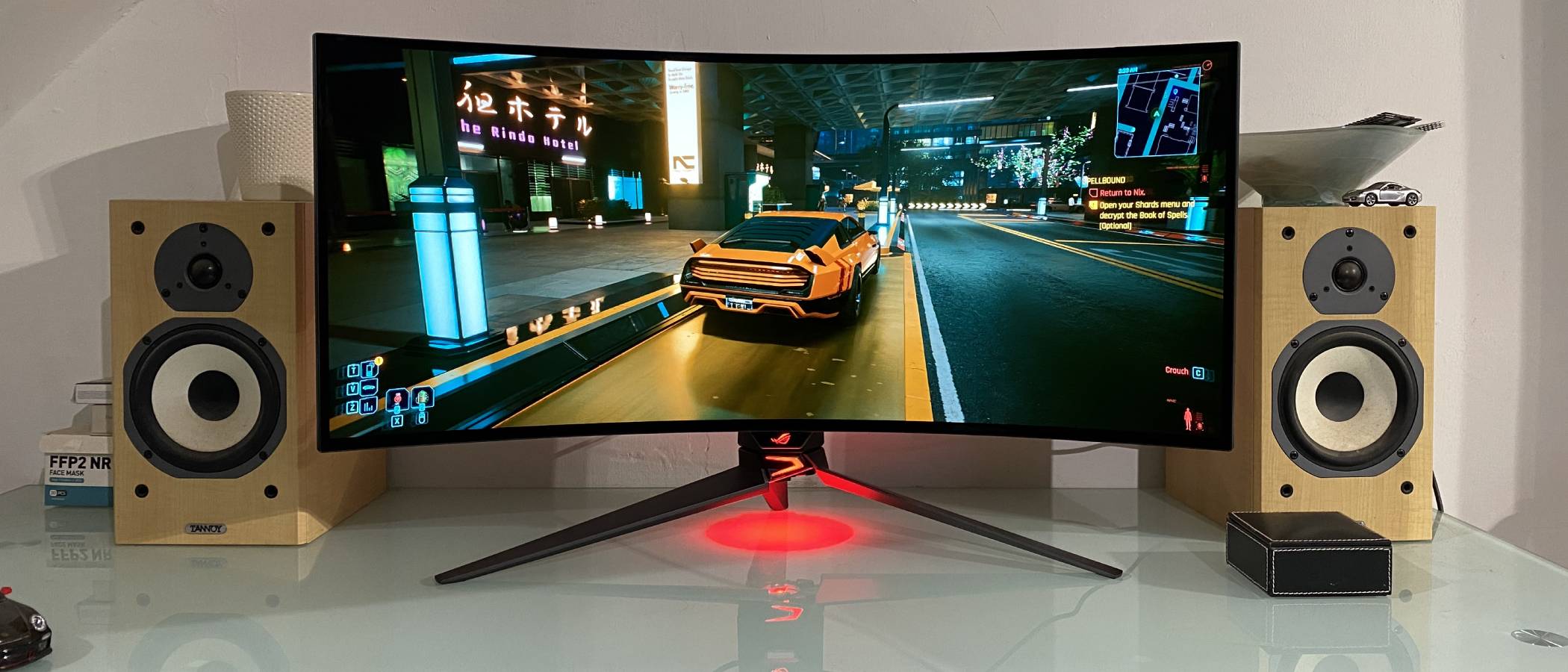Our Verdict
Give it up for the very first example of LG's new second-gen MLA OLED panel technology to hit the PCG labs. It's definitely an improvement over previous LG-powered OLED monitors thanks to increased brightness all-round. But it's also incredibly expensive and I probably still prefer Samsung's QD-OLED tech for PC gaming.
For
- Improved full-screen brightness
- 240Hz refresh rate
- Fantastic speed and HDR performance
Against
- Still not perfect when it comes to brightness
- Fairly silly price tag
PC Gamer's got your back
Welcome to 2024 and the second generation of OLED gaming monitors. Or should that be the third as Asus is claiming for this new panel? It depends how you measure, but the new Asus ROG Swift OLED PG34WCDM definitely moves the game on courtesy of the very latest LG OLED panel tech. We'll come to the specifics, but it's exciting to get our first taste of what promises to be the basis of a great many monitors this year.
The key general question is whether LG can close the gap on Samsung's QD-OLED tech for both outright full-screen brightness and also brightness consistency in a computing and gaming context. As for the Asus ROG Swift OLED PG34WCDM itself, it's a 34-inch curved ultrawide model with 3,440 by 1,440 pixels. So, the basic form factor isn't novel. That said, at 240Hz it's a step up in terms of refresh rate from earlier 34-inch ultrawide OLED monitors, such as the 165Hz Alienware 34 AW3423DW which is our incumbent favourite all-round OLED gaming panel.
Meanwhile, Asus is quoting 0.03ms for response, which is standard OLED fare if still pretty eye-popping compared to any LCD monitor. Colour coverage comes in at 99% of DCI-P3, which again is both excellent and about what you'd expect from a modern OLED panel.
Where things differ most obviously from existing gaming monitors with LG OLED technology is brightness. Peak brightness is up to 1,300 nits, albeit in a pretty small 3% window, while brightness in a 10% window is 650 nits. As for full-screen brightness, that's now 250 nits. Still modest compared to most LCD monitors, but a definite improvement from the typically sub-200 nits of previous LG-powered OLED monitors, including LG's own UltraGear 27GR95QE-B.
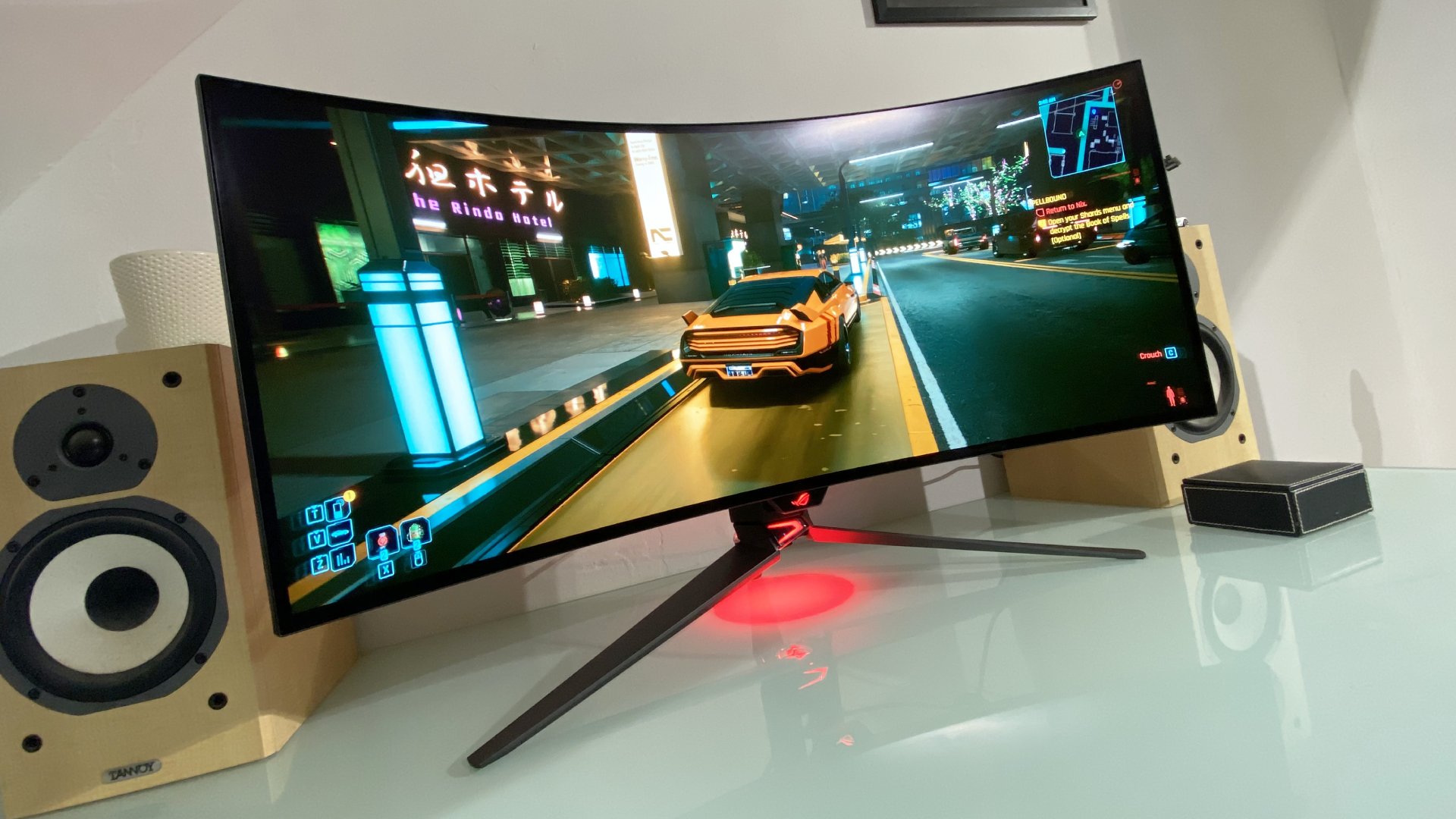
Screen size: 34-inch
Resolution: 3,440 x 1,440
Brightness: 250 nits full screen, 1,300 nits 3% window
Color coverage: 99% DCI-P3
Response time: 0.03ms
Refresh rate: 240Hz
HDR: DisplayHDR 400 True Black
Features: LG WOLED MLA Gen 2 panel, adaptive sync, 1x DisplayPort 1.4, 2x HDMI 2.1, 1x USB-C with 90W PD, KVM switch
Price: $1,299
Arguably, full-screen brightness has been the greatest weakness of OLED monitors based on LG's OLED technology. Asus says the PG34WCGM uses LG's "latest-generation" META panel tech. META is how LG Display refers to the micro lens array technology that's marketed as MLA by LG Electronics. Just for clarity, LG Display is the LG subsidiary that makes the actual OLED panels themselves, while LG Electronics makes things like TVs and monitors. It's not confusing at all.
More generally, full-screen brightness is certainly an issue Asus seems to be conscious of, and this new monitor has a fanless custom heatsink that should help. What's more, Asus has implemented a Uniform Brightness mode that's designed to deal with the way most—and particularly LG-powered OLED monitors—can bounce around in terms of panel brightness depending on what's being displayed.
Put simply, OLED panels are generally limited in how much of the screen can be fully lit at once, hence the 1,300 nits in a small 3% spec mentioned previously. The problem in a PC context, is that means the whole screen brightens and dims when, for instance, you resize a predominantly white browser window. Well, not with Asus Uniform Brightness switched on.
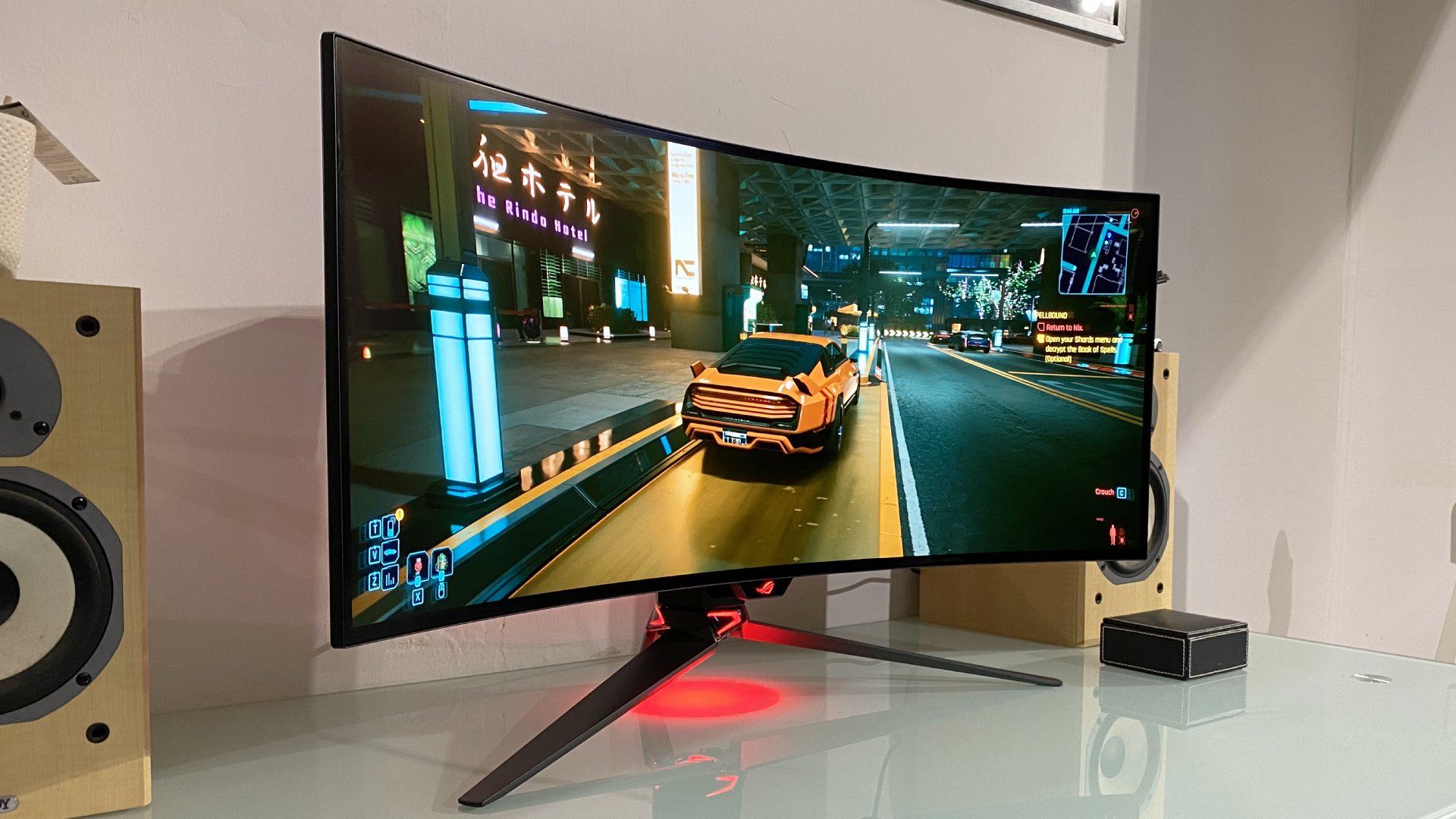
Peak brightness is up to 1,300 nits, albeit in a pretty small 3% window.
Another issue is text fringing on account of the non-standard subpixel structure of OLED panels. A standard LCD monitor has three subpixels per pixel, one red, one green and one blue, situated in vertical stripes and in that order, hence the whole "RGB" thing. Font rendering algorithms like ClearType in Windows actually use that structure to render text at the subpixel level. But for that to work properly, the display must have conventional RGB pixel.
LG's OLED panels, including the very latest revisions, actually have an additional white subpixel and come in a red, white, blue, and then green or "RWBG" arrangement. Long story short, that's not what ClearType is designed to use, so fonts aren't as clear as they might be. Asus has implemented a new Clear Pixel Edge algorithm that's claimed to reduce fringing and sharpen things up.
As for the tricky subject of OLED burn in, this monitor has numerous mitigation technologies. Moreover, anecdotally speaking most owners of existing OLED panels out in the real world seem to be having a good experience. But in strict empirical terms, OLED monitors have not been around long enough for a really clear consensus to emerge regarding the long term risk of burn in over multiple years. There have been some indications that LG panels fare better than Samsung, which is reassuring here. But, again, we're not quite at the point where we can say that with total confidence.
Rounding out the broader speeds and feeds, this is a pretty well specified monitor, with both USB-C with 90W of power delivery, full KVM switch functionality, plus a high quality stand fitted out with plenty of RGB feature lighting, and a nifty little Light in Motion feature that projects a red blob on your desktop, with interchangeable lens you can use for different ROG-y images. Then again, it had better be pretty decked out given the price.
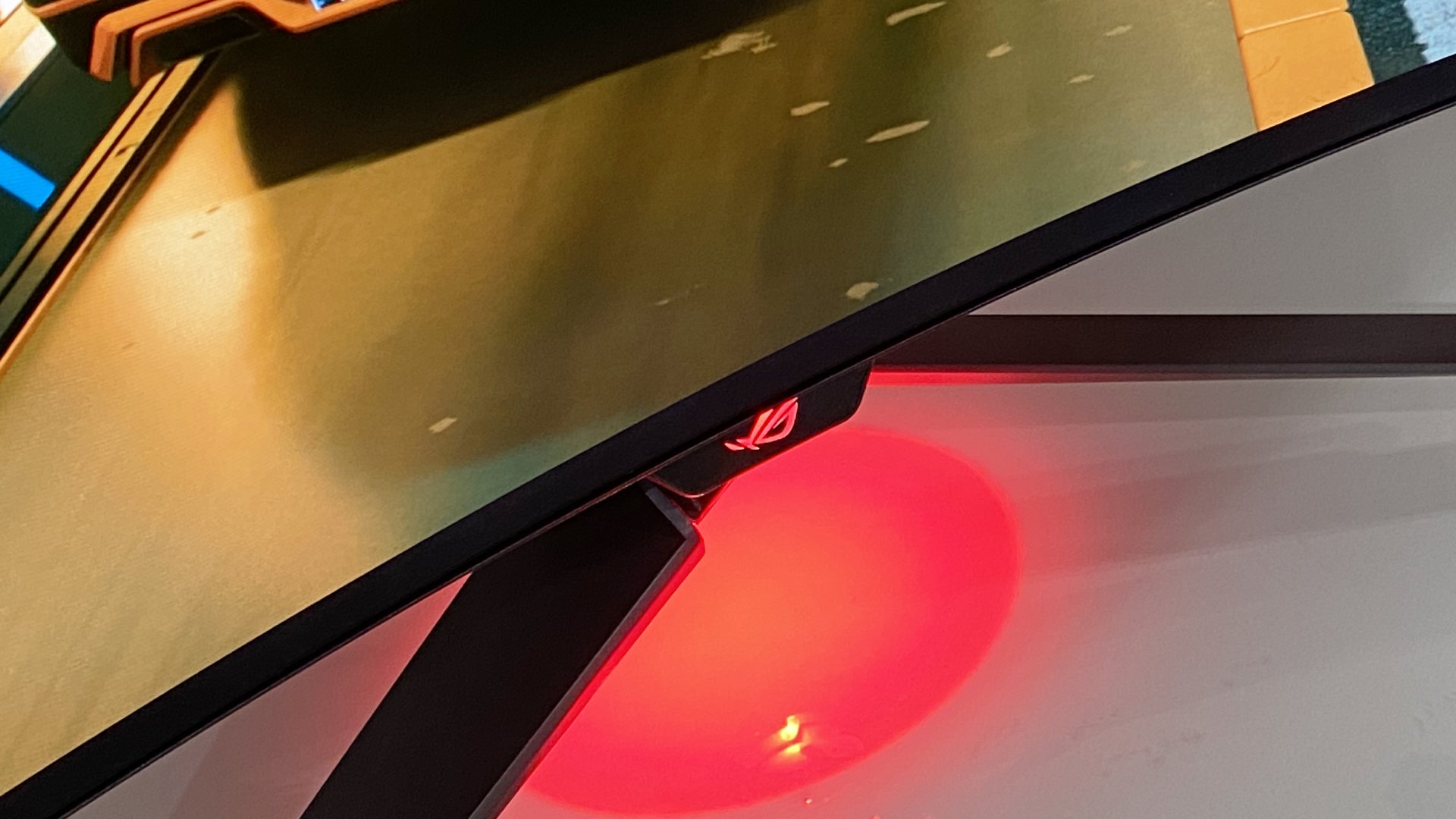
Speaking of money, it's absolutely front of mind when firing the Asus ROG Swift OLED PG34WCDM up for the first time. Asus has priced this panel up at $1,299 which immediately begs comparison with the $799 Alienware 34 AW3423DW. That's an awful lot more money.
Asus has priced this panel up at $1,299. That's an awful lot of money.
First impressions are good, though. The new PG34WCGM definitely has a bit more fundamental zing than every other LG-based OLED gaming monitor we've seen. As for whether it has entirely closed the gap to QD-OLED, that's a bit more complicated.
Asus' Uniform Brightness mode is problematic. It works as advertised, but when it's enabled, the panel is a little dimmer than we'd prefer, even with the brightness set to maximum. With it disabled, there is some variability in brightness depending on what is being displayed, but it's not nearly as distracting as previous LG panel generations and the overall brightness never drops as low as it does with Uniform Brightness enabled.
In other words, we'd leave that option off, even working on the desktop. Compared to the latest Samsung QD-OLED panels, such as the Odyssey OLED G9 G93SC, it's still a little bit less consistent without the Uniform Brightness function enabled—the Samsung panel only varies a tiny bit—and overall full-screen brightness is probably still a tiny bit behind when you have a really big bright object being displayed, like a predominantly white web page maximised.
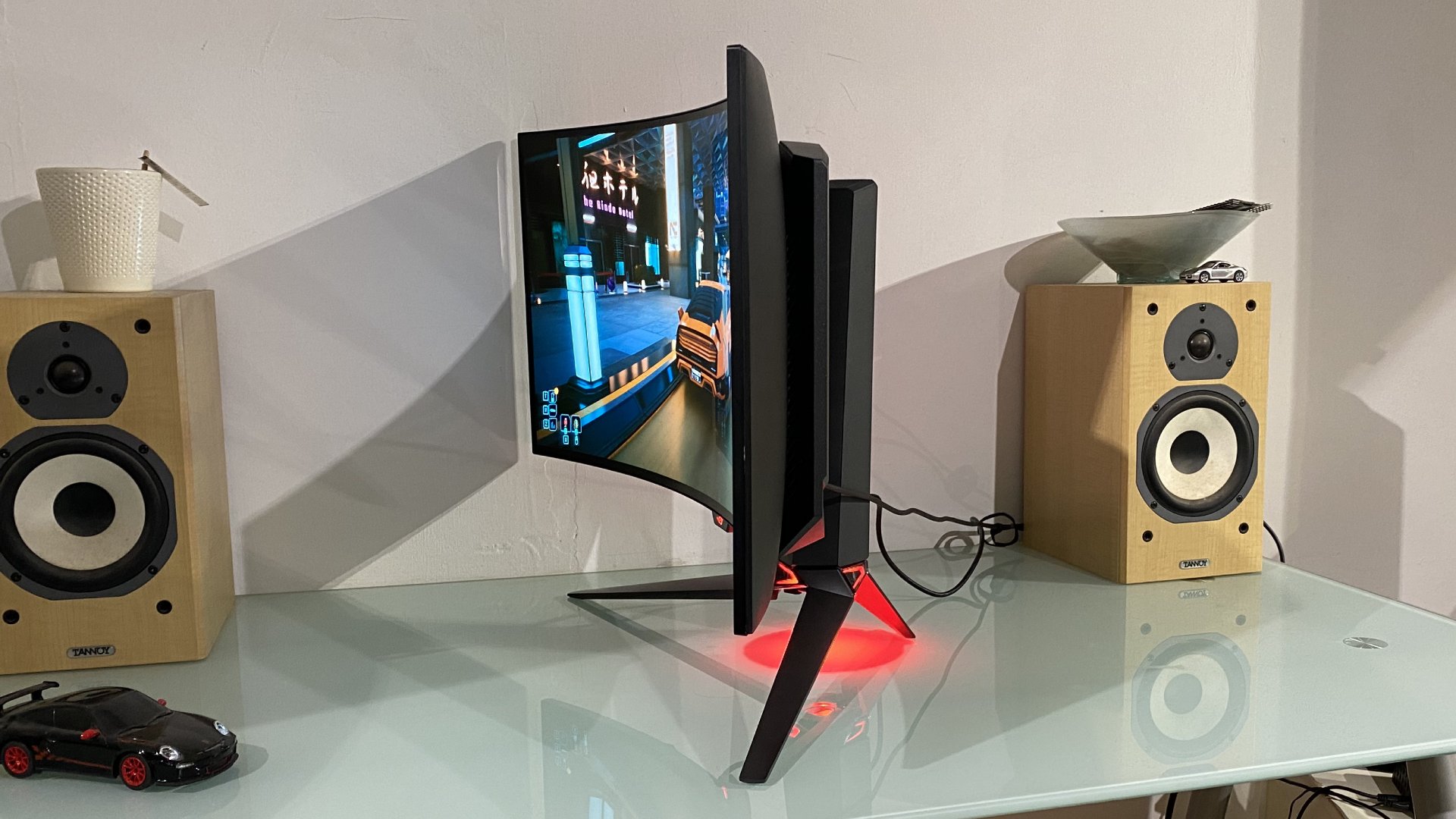
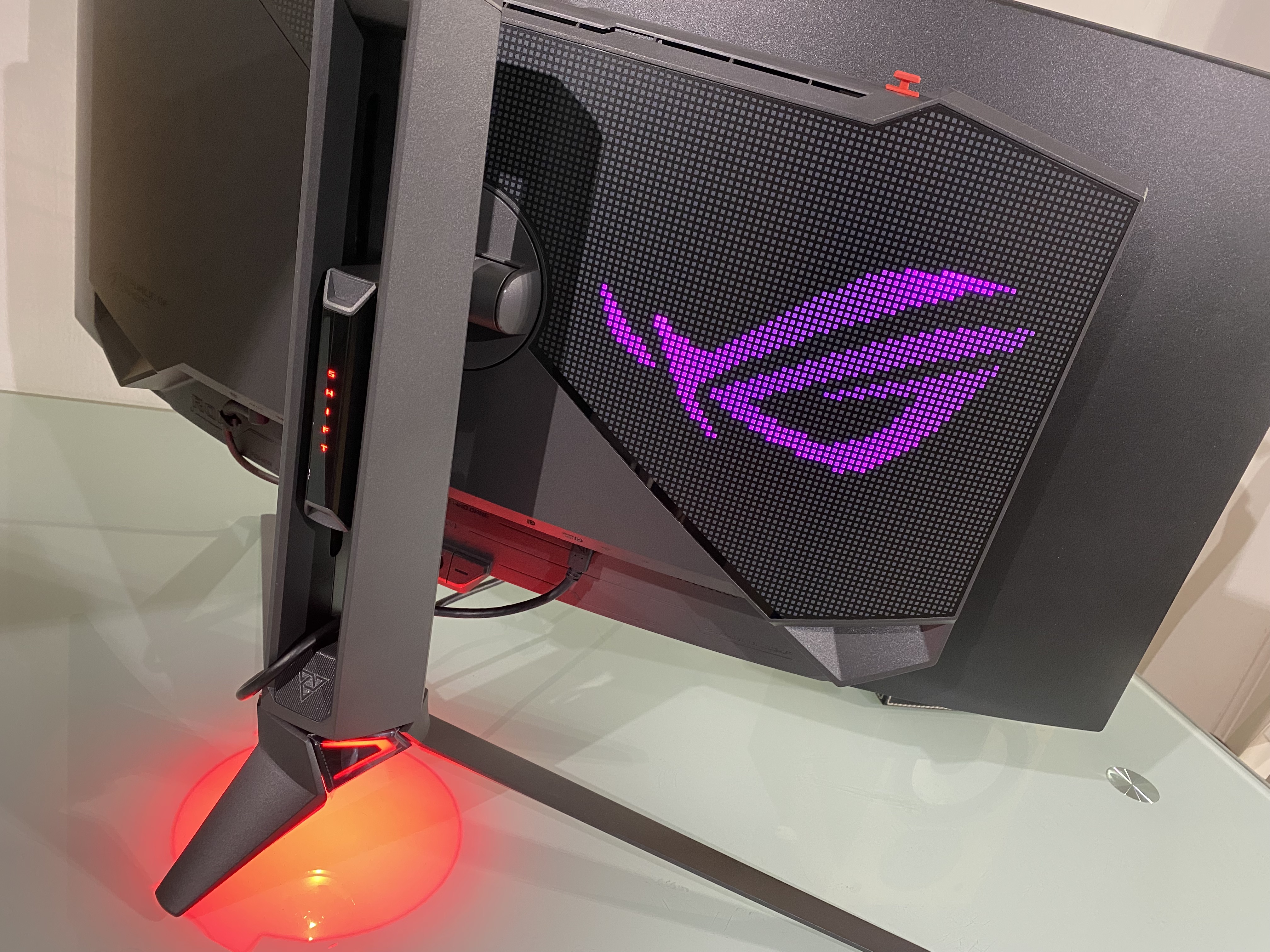
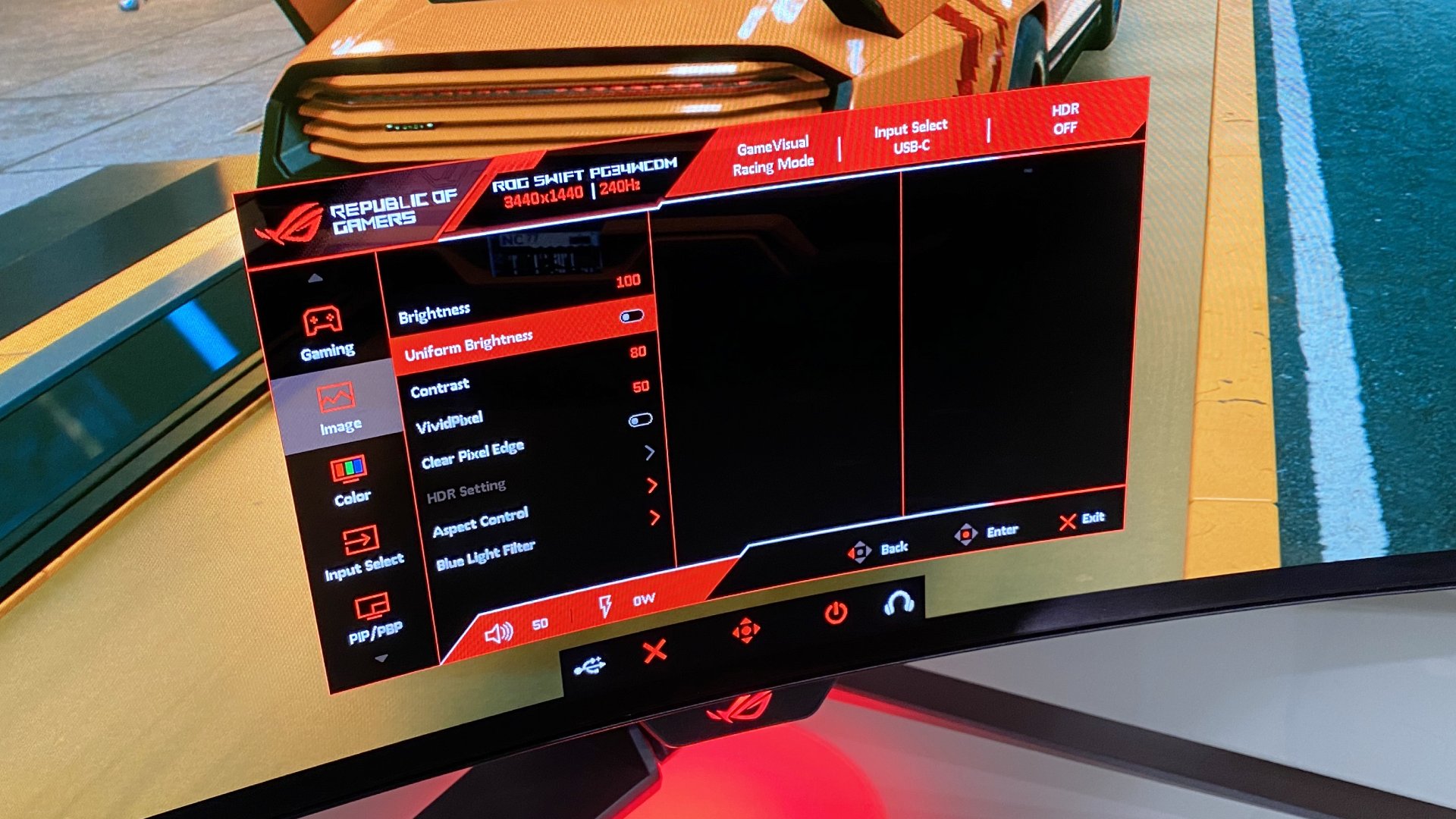
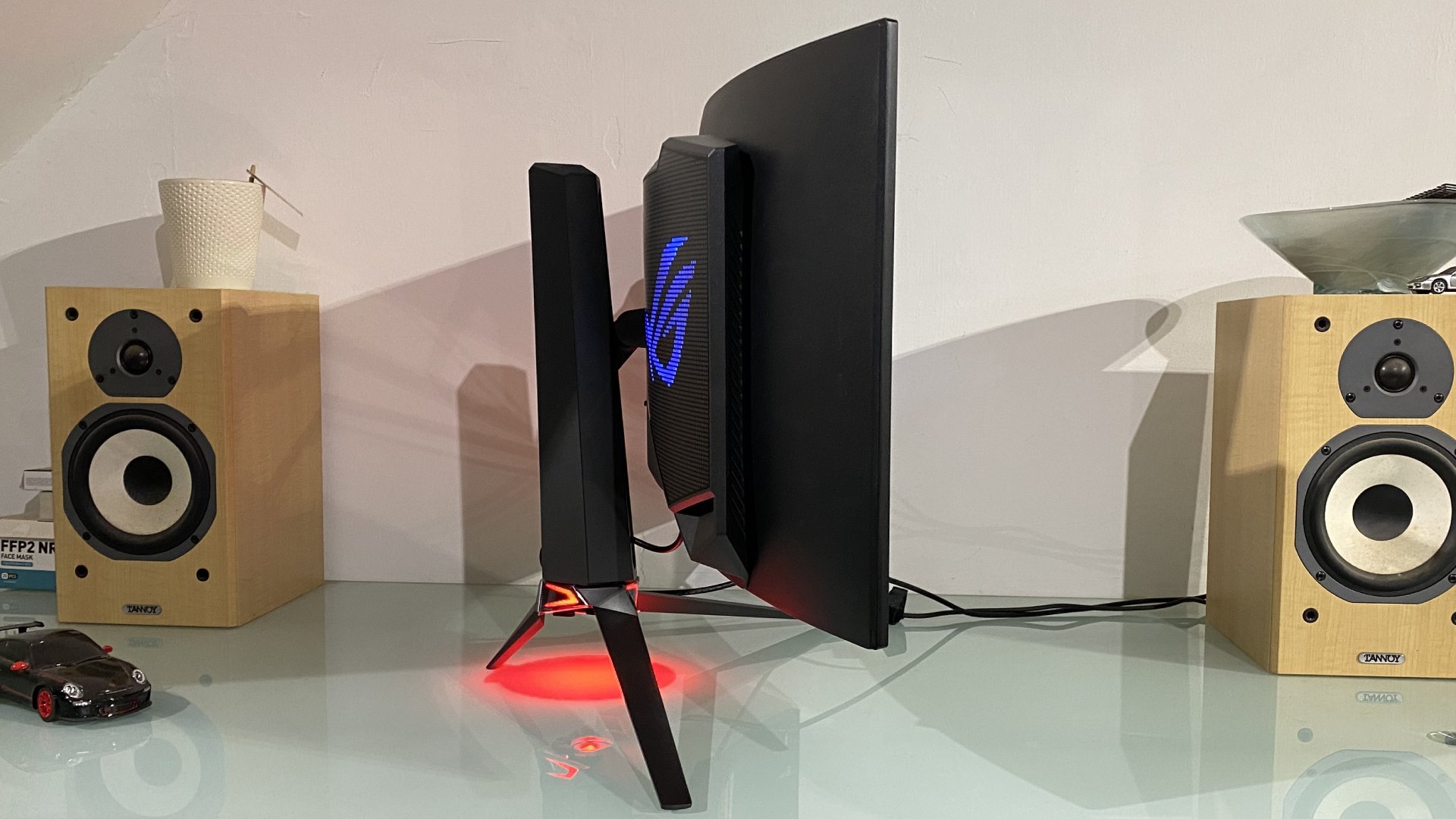
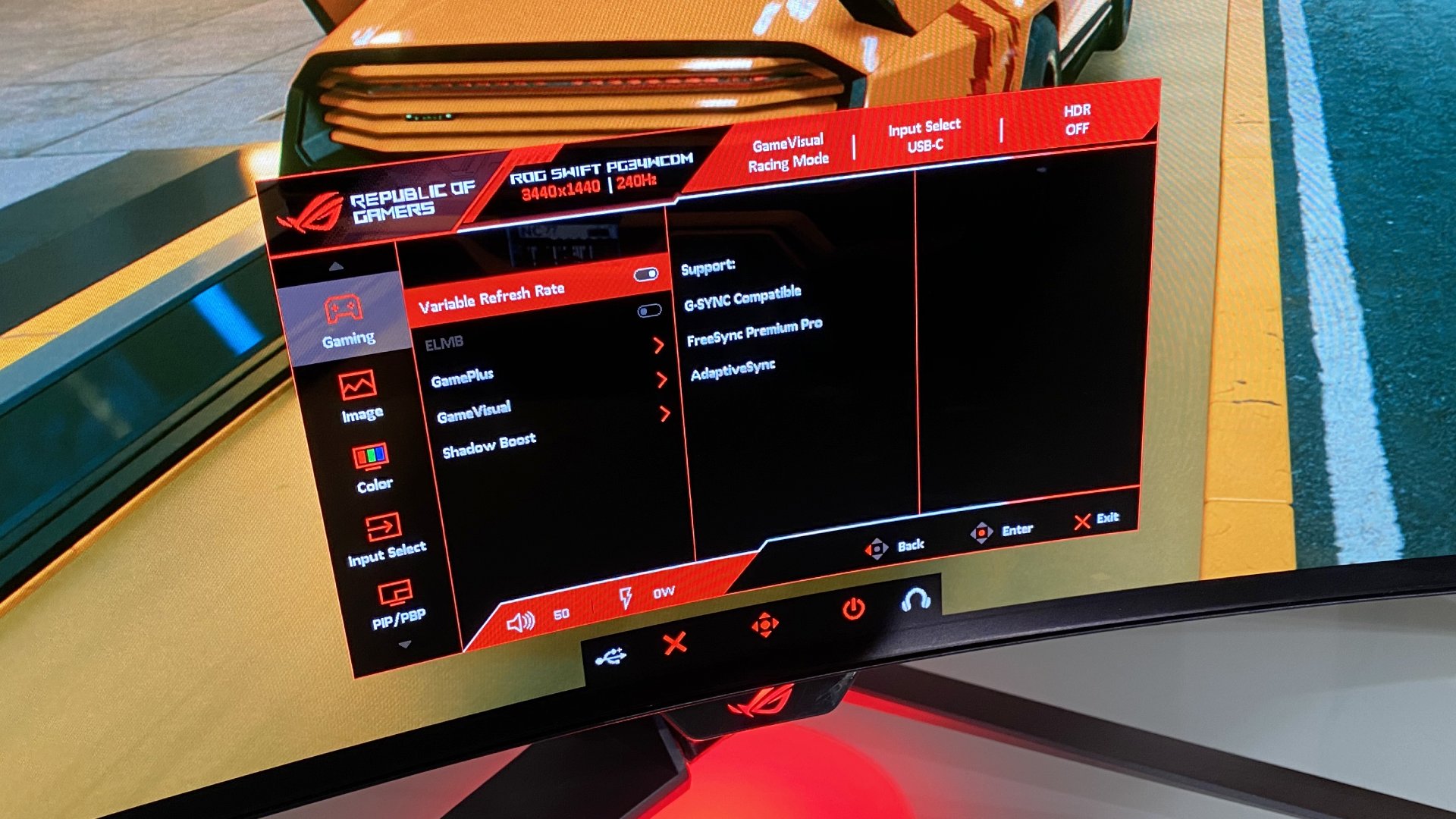
LG and in turn Asus have closed most of the gap, it's just slightly frustrating that this panel isn't even better given the sky high price. For $1,300, it doesn't seem too much to ask that basic brightness isn't an issue, however minor. One area where LG and Asus haven't closed the gap at all is the screen coating. It's a traditional matte anti-glare coating and in terms of perceived contrast, it definitely can't compete with the glossy coating on the latest Samsung QD-OLED monitors, including both the Alienware 34 AW3423DW and the Samsung Odyssey OLED G9 G93SC.
Of course, if you prefer matte to glossy, you're going to prefer this Asus. But for our money, glossy coatings really let OLED panels sing. They look punchier, more contrasty and just more vibrant and immersive. Oh, and if you're wondering about Asus's Clear Pixel Edge algorithm, it does a decent job of sharpening up fonts. There's little visible fringing. That said, this is a relatively low pixel density panel at 110DPI, so if you want super crispy fonts and outstanding image detail, your money is still better spent elsewhere.
At this point we've gotten a bit lost in the technicalities and forgotten about the most important thing, the actual gaming experience. Well, it's mostly stellar. Sure, the matte anti-glare coating does take the edge of some of the visual sizzle. But HDR games still absolutely pop.

Generally, this monitor is at its best in two scenarios. The first is HDR with a mix of bright and dark objects on the screen. Cyberpunk 2077 is crammed with that kind of stuff and it looks absolutely fabulous. Even the best LCD monitors with mini-LED backlights just can't compete with the per-pixel precision of OLED. You can have a tiny bright point light source perfectly illuminated within an inky black background. It's just fantastic.
The PG34WCGM is also very good whenever speed is required. In truth, a 21:9 aspect monitor isn't the best choice for any competitive online shooter purely in terms of field of view considerations. But if you don't mind some black bars, well, the visual clarity is pretty special and the latency is excellent, too, albeit there are obviously monitors with even higher refresh rates than 240Hz.
Where the PG34WCGM doesn't do quite as well is bright outdoor game scenes. The panel's somewhat limited full screen brightness can leave it looking a little flat and lacking in punch when a game demands brightness across the whole scene. There's no getting away from the fact that mini-LED monitors are better for that very specific gaming scenario.
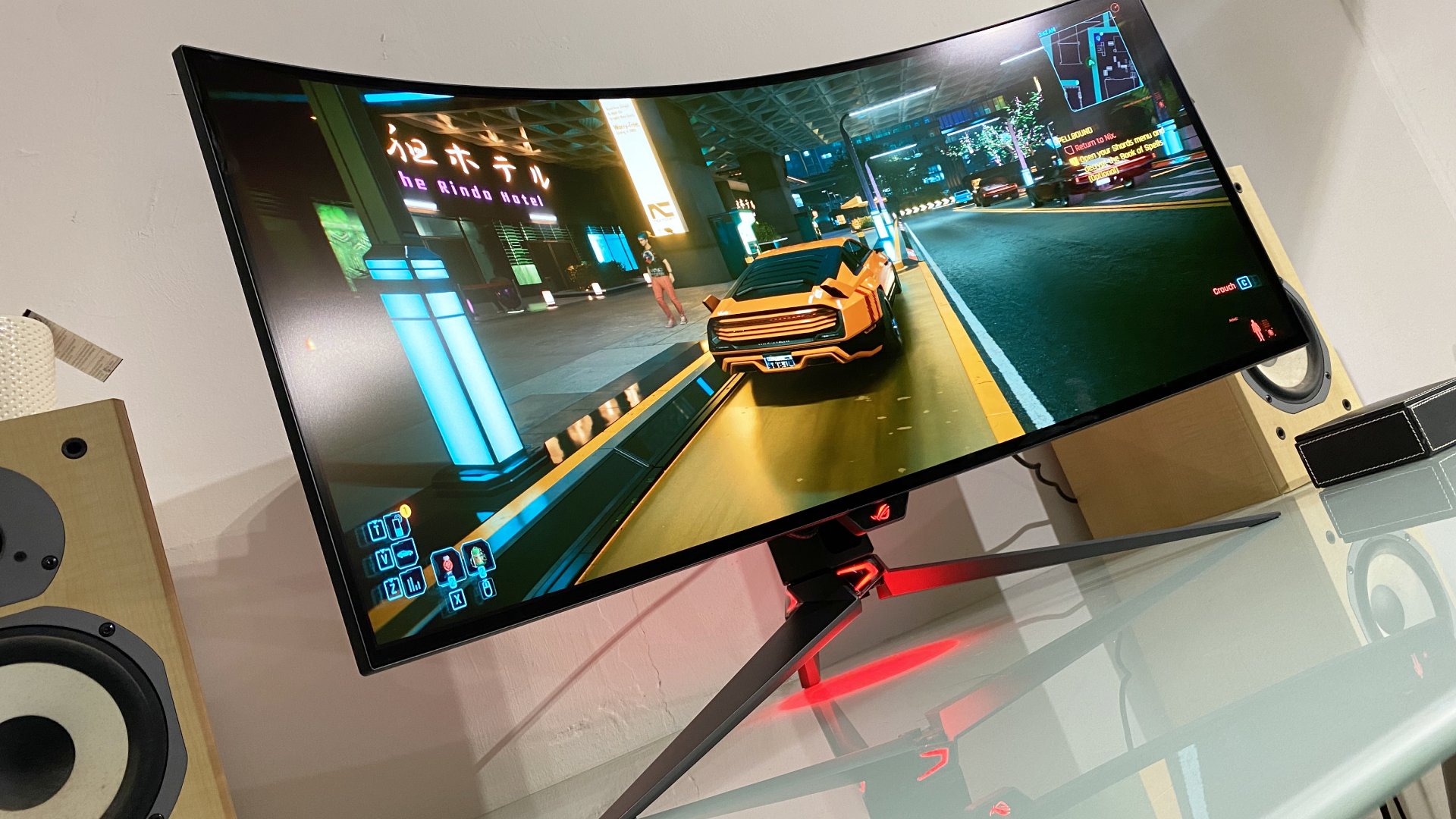
Another slight weakness is SDR rendering in HDR mode. In an ideal world, you'd have any HDR monitor running in HDR mode all the time rather than having to enable HDR for specific games or video content. But that relies on SDR content being handled well in HDR mode. The PG34WCGM isn't too bad in that regard. But even with SDR brightness set to maximum in Windows' HDR DIsplay Settings submenu, SDR colours are a little bit washed out and overall brightness levels are lower than when running in SDR mode.
✅ You want the ultimate LG-powered OLED experience: LG's new second-gen MLA OLED panel is a definite improvement for full-screen brightness.
❌ You're expecting perfection for $1,300: Even LG's latest OLED tech still has limitations. Alienware's 34-inch OLED is also much better value.
For pure gaming, then, the Asus ROG Swift OLED PG34WCDM is pretty incredible. The revised LG OLED tech hits even greater highs, has the same ridiculously fast response along with improved latency, at least in the 34-inch ultrawide category.
But it's not perfect and the main problem is pricing. It's a struggle to see what you're getting here for the $500 price premium compared to the $800 Alienware 34, aside from 75Hz of additional refresh rate. That does help with latency in certain gaming scenarios, for sure. But for a lot of gamers, 165Hz versus 240Hz isn't massively consequential.
$1,299 also feels like a heck of a lot to pay for any 1440p monitor. OK, it's ultrawide. But you can get a decent LCD-based 34-inch high refresh 1440p ultrawide monitor for $350. With the best will in the world, this isn't three to four times the experience. But the real problem is always going to be that Alienware monitor. Even at the same money we'd marginally prefer it for its glossy coating and more consistent full-screen brightness. For $500 less, well, it's a bit of a no brainer.
Give it up for the very first example of LG's new second-gen MLA OLED panel technology to hit the PCG labs. It's definitely an improvement over previous LG-powered OLED monitors thanks to increased brightness all-round. But it's also incredibly expensive and I probably still prefer Samsung's QD-OLED tech for PC gaming.

Jeremy has been writing about technology and PCs since the 90nm Netburst era (Google it!) and enjoys nothing more than a serious dissertation on the finer points of monitor input lag and overshoot followed by a forensic examination of advanced lithography. Or maybe he just likes machines that go “ping!” He also has a thing for tennis and cars.
